Sample information |
|
| Picture |

|
|---|---|
| Location | |
| Collection date | 09/06/2023 |
| Captive / Cultivated? | Wild-caught |
| Group | Hawaii Community College |
| Observations | All flies from both groups displayed attraction to the rotten fruit samples, particularly the Waiwi, and were more responsive as well as active in the morning and early evening/afternoon. They were the least active and less reactive to light at night. |
| Putative identification | Arthropoda Insecta Diptera Drosophilidae Drosophila |
Methods |
|
| Extraction kit | Edwards Buffer |
| DNA extraction location | Whole arthropod |
| Single or Duplex PCR | Single Reaction |
| Gel electrophoresis system | Edvotek Gel Electrophoresis |
| Buffer | TBE |
| DNA stain | SYBR Safe |
| Gel images |

|
| Protocol notes | Three arthropods were selected as a low-elevation sample group, all three were included in the protocol. |
Results |
|
| Wolbachia presence | Yes |
| Confidence level | High |
| Explanation of confidence level |
All PCR control were successful, Drosophilinae samples (2a-7a), (+) DNA control (8a), (+) Drosophila control (2b), and (-) Drosophila control (3b) had bands at 708 bp, positive results of arthropod barcoding gene to confirm presence of CO1 gene. The three Drosophilinae samples from Low Elevation (5c-7c), (+) DNA control (8c), and (+) Drosophila control (6b) all had bands at 438 bp, positive results of Wolbachia specific gene to find the presence of 16S rRNA (Figure 1). The data from each of the controls tells me that this experiment went as expected, DNA was present where anticipated and Wolbachia was present where assumed so the arthropods tested are confidently infected with Wolbachia. Therefore, the gel electrophoresis results disprove my original hypothesis that there would be no difference between the Wolbachia infection prevalence of fruit flies in a higher elevation versus a lower elevation. There is a difference between the Wolbachia infection prevalence of Drosophilinae in a higher elevation versus a lower elevation, the lower elevation Drosophilinae samples were all positive unlike the high elevation which were all negative. |
| Wolbachia 16S sequence | Download AB1
|
| Arthropod COI sequence | Download AB1
>Drosophila ananassae TTTTGGCTTGAGCTGGAATAGTTGGAACTTCACTAAGTATTTTAATTCGAGCTGAATTAGGACACCCTGGA GCTTTAATTGGAGATGATCAAATTTATAACGTTATTGTAACAGCACACGCTTTTATTATAATTTTTTTCATGGTTATACC AATTATAATTGGAGGATTTGGGAATTGATTAGTTCCTTTAATATTAGGAGCACCTGATATAGCATTCCCACGAATAAATA ATATAAGATTTTGATTACTACCCCCTGCTCTTTCTCTATTATTAGTAAGAAGAATAGTTGAAAATGGAGCTGGTACTGGG TGAACAGTTTACCCACCTCTTTCAGCTGGAATTGCTCATGGAGGGGCTTCAGTTGATCTAGCTATTTTTTCATTACATTT AGCCGGAATTTCTTCAATTTTAGGAGCTGTAAATTTTATTACAACAGTAATTAATATACGATCAACTGGAATTACTCTAG ATCGTATACCTTTATTTGTTTGATCGGTAGTAATTACAGCTTTATTATTACTTTTATCTTTACCAGTATTAGCTGGAGCT ATTACCATATTATTAACAGATCGAAATTTAAATACATCATTTTTTGACCCAGCTGGAGGGGGAGATCCATTTTATACC ACATTTTTTGATTTT
BLAST at The Wolbachia Project BLAST at NCBI
|
| Summary | The Drosophila was found to be postive for Wolbachia. |

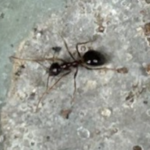 IM P7 #1
IM P7 #1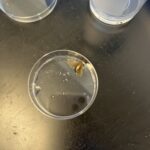 Wolbachia- Moth
Wolbachia- Moth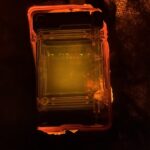 Wolbachia Project
Wolbachia Project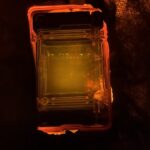 Wolbachia Project
Wolbachia Project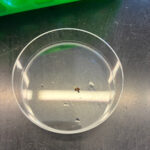 Wolbachia Lab: DNA Extraction
Wolbachia Lab: DNA Extraction